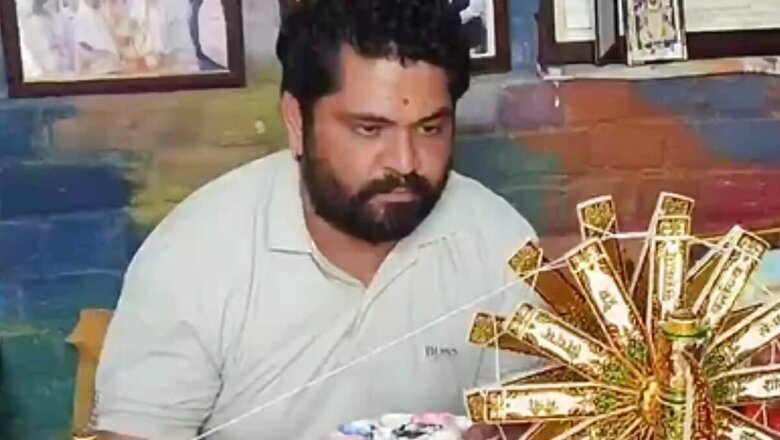
views
A painter from Bikaner, Ram Kumar Bhadani, has gained attention for his unique artwork that connects India’s rich culture through a spinning wheel, or Charkha. Bikaner, known for its art and culture, has long celebrated traditions like the golden pen and Utsa art. Ram Kumar’s recent creation, a special Charkha made from teak wood, is a testament to this heritage.
The Charkha is adorned with 12 sticks and its dimensions are 33 inches in length, 18 inches in width and 18 inches in height. The artist spent three years crafting this intricate piece. Inspired by the 24 spokes of the Ashoka Chakra, Ram Kumar has inscribed their names in the Devanagari script using golden ink, highlighting virtues such as Duty, Cooperation, Peace, Brotherhood and more.
The Charkha also features two pillars representing the Ashoka Pillar with its iconic four lions, symbolising India’s strength and unity. Additionally, smaller pillars pay tribute to the Ashoka Chakra seen on the national flag. Beneath the Charkha, a plaque engraved with Mahatma Gandhi’s three monkeys—symbolising “see no evil, speak no evil, hear no evil”—is displayed, along with Gandhi’s glasses, symbolising a clean India. A clock near the spinning wheel represents time’s importance and continuity, while the handle bears the inscription “Satyameva Jayate.”
The foundation of the Charkha is intricately designed, showcasing national symbols like the Bharat Ratna, Veena, Rupee symbol, tiger, peacock and lotus, among others. These elements are embossed in golden ink and white colour, with floral patterns adorning the corners and centre of the foundation. The surface, predominantly white, symbolises peace, while red and green are used to enhance the leaf patterns.
Ram Kumar was inspired by Mahatma Gandhi’s efforts to popularise the Charkha and his belief in Ahimsa Paramo Dharma. Through this artwork, he aims to encapsulate India’s unity and heritage, reflecting Gandhi’s vision of a strong, united nation.




















Comments
0 comment